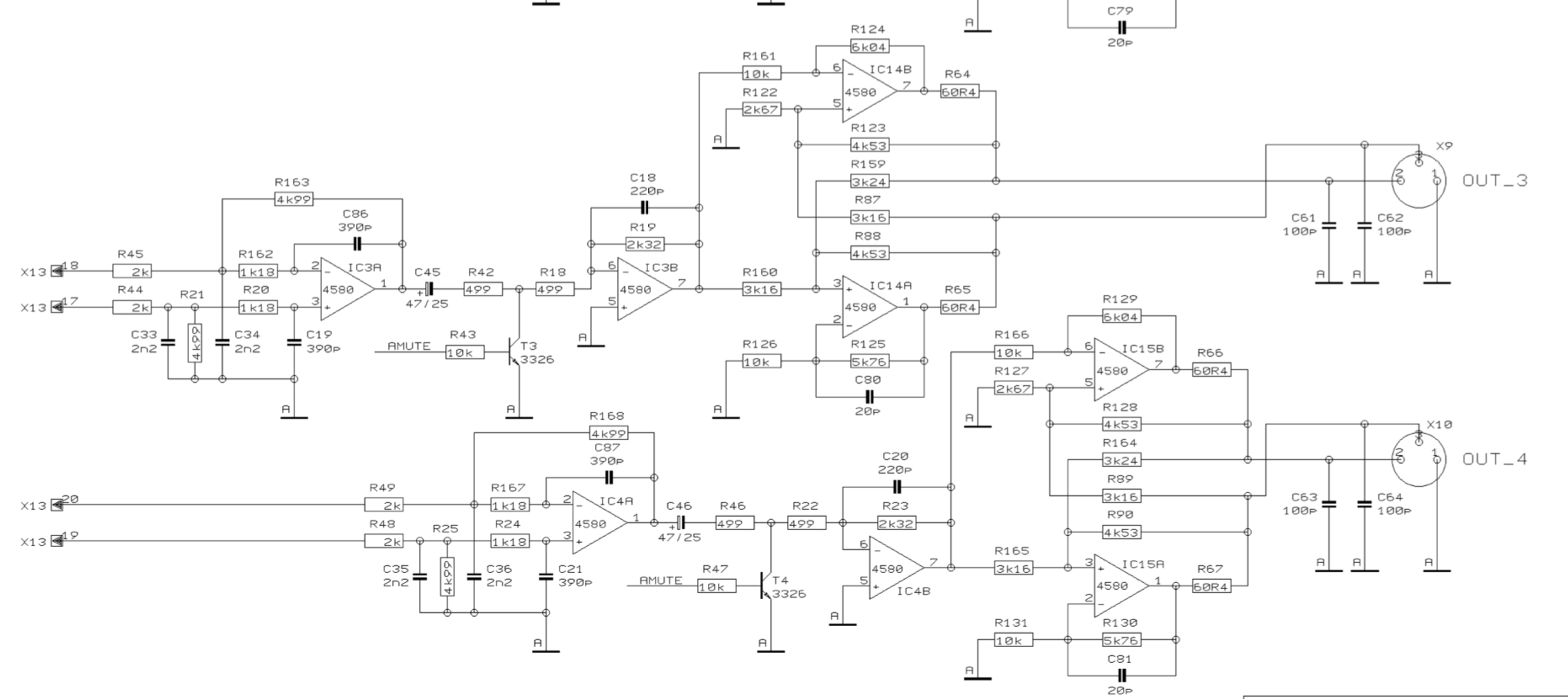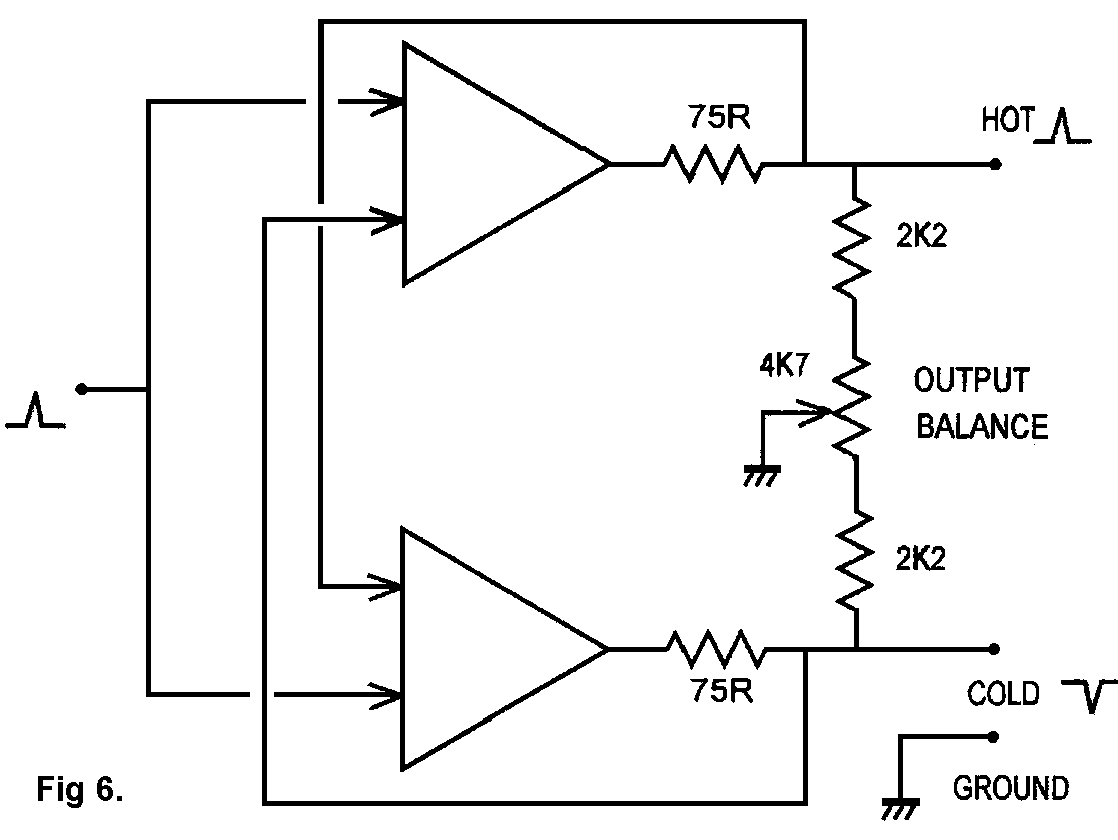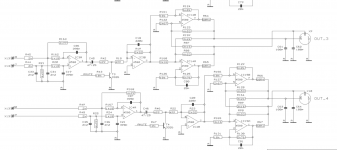Section 5 of the manual "for unbalanced use pin 1 and pin 3 have to be bridged" That's pretty clear to me.
What was your conclusion with six-channel volume control? Which is your prefered method?
What was your conclusion with six-channel volume control? Which is your prefered method?
Section 5 of the manual "for unbalanced use pin 1 and pin 3 have to be bridged" That's pretty clear to me.
It just never ends. 🙂
I think this must be the fifteenth time that I've told you that it's not mandatory to connect pin 3.
You seem incapable of accepting that.
Oh well.
Dave.
Last edited:
You can use 1&2, or 1&3 or 2&3 (with proper ground lift). All will work, all are different.
As for volume control, just get your gain structure right, and use digital volume. If using a fixed volume device, like a CD player, you can change the volume with master gains.
As you are now using the analog inputs, you just do your volume control there. It would be nice if you had a preamp with some gain, to hit the analog inputs with good level.
As for volume control, just get your gain structure right, and use digital volume. If using a fixed volume device, like a CD player, you can change the volume with master gains.
As you are now using the analog inputs, you just do your volume control there. It would be nice if you had a preamp with some gain, to hit the analog inputs with good level.
Draki, I've been looking at the volume control you linked to but I can't see how it functions as a volume control, it there another chip(s) on the other side of the board, I can only see op-amps? 😕
Not to leave this unanswered: It has a Mitsubishi 6ch volume control chip (M62446), three dual op-amps as buffers (NE5532). Works nicely (have one myself).
Thanks Pano, when all said and done it is no doubt possible to wire the pins as you and Davey say, but I think I'll stick with what is says to do in the manual.
If I use digital input, would it be best to use ganged pots on the outputs?
If I use digital input, would it be best to use ganged pots on the outputs?
Not to leave this unanswered: It has a Mitsubishi 6ch volume control chip (M62446), three dual op-amps as buffers (NE5532). Works nicely (have one myself).
Thanks 🙂
Here is the output analog output of the DCX. That may help with your cabling.

Mentionned by Douglas Self, quasi-float (Balanced Line Technology ), this is the principleas used by the DCX and by the BSS366 :

Wiring as in BSS 366 manual (should be used with the DCX) :
Using the connection as shown by the lower graphic, you get the same voltage for an unbalanced receiver input as for a balanced receiver input.
Using the upper connections, you get half the voltage for an unbalanced receiver input compared to a balanced receiver input.
As far as I know, the topology of the output stage is similar.Does anybody know how similar the DCX2496 is to the BSS366??? George
IIRC there are people who have picked up the single ended signal somewhere around the muting transistor, or just after the 1st opamp. I haven't done that, but it seems a reasonable place to get the signal if you want a single ended output. The signal level may also be better for consumer gear.
Yes, that has been reported in the DCX Threads.
There was a French Member who went a bit further and added a passive filter after the mute tapping point that bypasses all of the remaining output stages.
He had a webpage or more detailing the modification.
That avoids ~11dB of gain and the noise+distortion that gives
There was a French Member who went a bit further and added a passive filter after the mute tapping point that bypasses all of the remaining output stages.
He had a webpage or more detailing the modification.
That avoids ~11dB of gain and the noise+distortion that gives
Yes, that has been reported in the DCX Threads.
There was a French Member who went a bit further and added a passive filter after the mute tapping point that bypasses all of the remaining output stages.
He had a webpage or more detailing the modification.
That avoids ~11dB of gain and the noise+distortion that gives
Yeah, that's a common DIY modification. However, in my opinion, that doesn't leave enough gain.
When considering modifications to the output stage, you can quickly come to the conclusion it makes more sense to just remove the entire board and substitute in something much better. This is how many of the more formal modifications (like Jan Didden's) have been implemented.
On my own DCX, I removed the entire rear board and installed a six-transformer configuration that picks up the signal directly from the DAC's. This doesn't yield enough voltage either, but adding a six-channel volume control (with some line gain) solves the issue.
I hope this posting of the output portion of the schematic makes clear my previous commentary regarding the handling of pin 3. You can ground pin 3 if you so chose, but you will have plenty of voltage and the increased load on one section of the output driver translates to some increased distortion on the other half.
However, if you leave pin 3 floating, then you have a more suitable output voltage, but you lose matching between the six channels owing to component tolerances surrounding the output driver stages.
It's a double-edged sword.
For those new to this thread, all of this analysis and modification discussion and everything else is already contained in this monsterously long thread. This thread is an excellent repository.....for those who choose to read it.
Dave.
The posting of the output schematic makes it clear that it is a quasi-floating balanced output, and according to Doug Self and others pin 3 should be grounded, here is a quote from Selfs article
"When a quasi-floating output is used unbalanced, the cold leg must be grounded, or common-mode noise will degrade the noise floor by at least 10 dB, and there may be other problems"
It is from this article Balanced Line Technology
"When a quasi-floating output is used unbalanced, the cold leg must be grounded, or common-mode noise will degrade the noise floor by at least 10 dB, and there may be other problems"
It is from this article Balanced Line Technology
Why would you think you need to believe one or the other?
Have you even hooked up your unit and had some fun with it, or are you fully into analysis paralysis on this?
In the whole scheme of things with DCX2496 operation, this output interfacing configuration is just one small part.
I suggest to give this aspect a rest and reflect again on it down the road.
Dave.
Have you even hooked up your unit and had some fun with it, or are you fully into analysis paralysis on this?
In the whole scheme of things with DCX2496 operation, this output interfacing configuration is just one small part.
I suggest to give this aspect a rest and reflect again on it down the road.
Dave.
Yep. I'm playing with it now. You're right, it's not that important, it sounds good I'm very happy with it so far. I hooked up my CD digital output to it, I'd turned the digital output off years ago and it won't let me turn it back on 😡. Ironically I have another player with one of the audio channels out so I'm using the digital out on that instead. Pano will be happy, it goes into the red now on the inputs 😀
On my own DCX, I removed the entire rear board and installed a six-transformer configuration that picks up the signal directly from the DAC's. This doesn't yield enough voltage either, but adding a six-channel volume control (with some line gain) solves the issue.
Dave.
Same here
An interesting device and potentially of value to many DCX users. But I could find no performance specs or any reviews. Can you link to any?One possible suggestion for a suitable 6-channel volume control:
Volume control preamplifier 5.1 channels input / 5.1 output - Audiophonics
B.
- Home
- Source & Line
- Digital Line Level
- Behringer DCX2496 digital X-over
